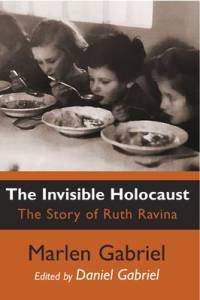Om The Invisible Holocaust
Ruth Ravina's story is one of childhood under duress. She survived hunger, cold, solitude, existential boredom, and life-threatening situations. Born on April 7, 1937 in Warsaw, Poland, she was raised in Kozienice. In 1940, about a year after the German invasion, a ghetto was established in Kozienice, where Ruth was forced to witness executions. Escaping the Kozienice ghetto in the fall of 1942, she had to negotiate the exigencies of three forced labor camps in Poland - Pionki, Skarzysko-Kamienna, and Czestochowa - together with her mother and her cousin Sarah. Being hidden for the most part, Ruth was in constant fear of being caught and killed; children were essentially not allowed in these camps. Her father and most of her very large extended family perished in the Holocaust. Only she, her mother and her cousins Sarah and Rose survived. Though essentially Ruth's 'Invisible Holocaust', the work transcends the memoir form in its presentation of the author's metatexts, her own imperilled childhood in the war. Clearly secondary to Ruth's story, this material nevertheless complicates and intensifies the narrative without relativizing the Holocaust. This kind of dialogue between Jew and German has not taken place before in the Holocaust memoir as a genre. It shows the particular brutality children suffer in war, regardless of the ideological and political position they are forced to occupy.
Visa mer

